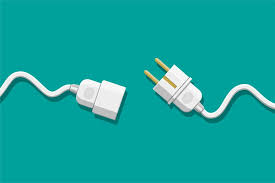Goal: meaningful connections, sharing caregiving responsibilities, and developing community-based solutions.
You are here
The Digital Divide -- Why haven't all older adults crossed it?
 A hot topic now – crossing the so-called ‘Digital Divide’. It’s ironic – the topic has been under discussion forever. Long ago, in a world far, far, away – it was easy for the oldest to say that they don’t see the benefit in technology, Internet access or other devices. That was pre-pandemic of course. In 2020, the divide looks like a chasm, depending on how it is viewed. What will close it? What is the missing link? More training? Discounted devices? Free Internet? Grandchildren photos? Worsening social isolation? Telehealth visits? And do we mean ‘Digital Divide’ – or do we really mean Internet Access Divide? Or is it the smartphone ownership divide? The how-do-I-use-this-thing divide? And what does it mean for one's life to be on the wrong side?
A hot topic now – crossing the so-called ‘Digital Divide’. It’s ironic – the topic has been under discussion forever. Long ago, in a world far, far, away – it was easy for the oldest to say that they don’t see the benefit in technology, Internet access or other devices. That was pre-pandemic of course. In 2020, the divide looks like a chasm, depending on how it is viewed. What will close it? What is the missing link? More training? Discounted devices? Free Internet? Grandchildren photos? Worsening social isolation? Telehealth visits? And do we mean ‘Digital Divide’ – or do we really mean Internet Access Divide? Or is it the smartphone ownership divide? The how-do-I-use-this-thing divide? And what does it mean for one's life to be on the wrong side?
Let's get real: Internet access is the lifeblood of connection. We have never seen a world in which so many were so isolated from family, from friends, from activities, from healthcare. And we have never seen a world in which the ‘connections’ to everything -- services, shopping, learning about new products, listening to music, meeting people, talking to a doctor -- are all made through an alphabet soup of technology, delivered from almost monopoly-like tech firms from Amazon to Zoom.
About those gaps -- basic questions need answers. Let’s say you’re a national organization trying to close this gap in 2021. So the steering committee asks itself, among older adults, who actually has what devices? This shouldn’t be that hard, but the data seems to be at best surveyed annually. And the detailed breakdown of the several decades starting at ‘70+’? Good luck with that. Let’s go with the AARP number of 62% of the 70+ owning smartphones. Why don’t the other 38% (or more in the upper age decades) own or want them? Is it about the price, which seems to average $500 (without the carrier) though many are pricier, and some are less, and much less with a monthly carrier plan. Is it about out-of-box usability? Hmm. Check out this setup list for the ‘more senior-friendly iPhone.’ And for the Android? Oddly, that looks easier. So let’s assume that the setup was easy. Oops – they want access to the Internet…
Why doesn’t everyone have access to the Internet? This one depends on a few key documents need to be viewed – including this article which notes that 21 million may not have high-speed access, according to the FCC. By the way, if it isn’t high speed/broadband, forget about Netflix or FaceTime with the family. Oh wait, that is based on data from the Internet Service Providers (ISPs) who have a vested interest in the number. These ISPs count a census block as having access even if only one house is enabled! Another more likely number? According to Broadband Now, 42 million don’t have broadband. Is this about the cost? And how complex is the cost calculation? Turns out it is highly variable, based on geography and provider. And it is significantly hampered by lack of competition in some areas. And in areas of new homes, for example, there may only be one bidder who can then set the price and contract length. And providers can decide to put caps on Internet data usage in the home, raising the price by as much as another $100/month.
[Note: New report The Future of Remote Care Technology and Older Adults 2020 is now online.]

Comments
Is anyone planning to better
Is anyone planning to better survey the 70+ segment to get more detail about access and usage? Or, maybe that's already underway and will be reported soon? Seems that's well within reach of several national organizations...